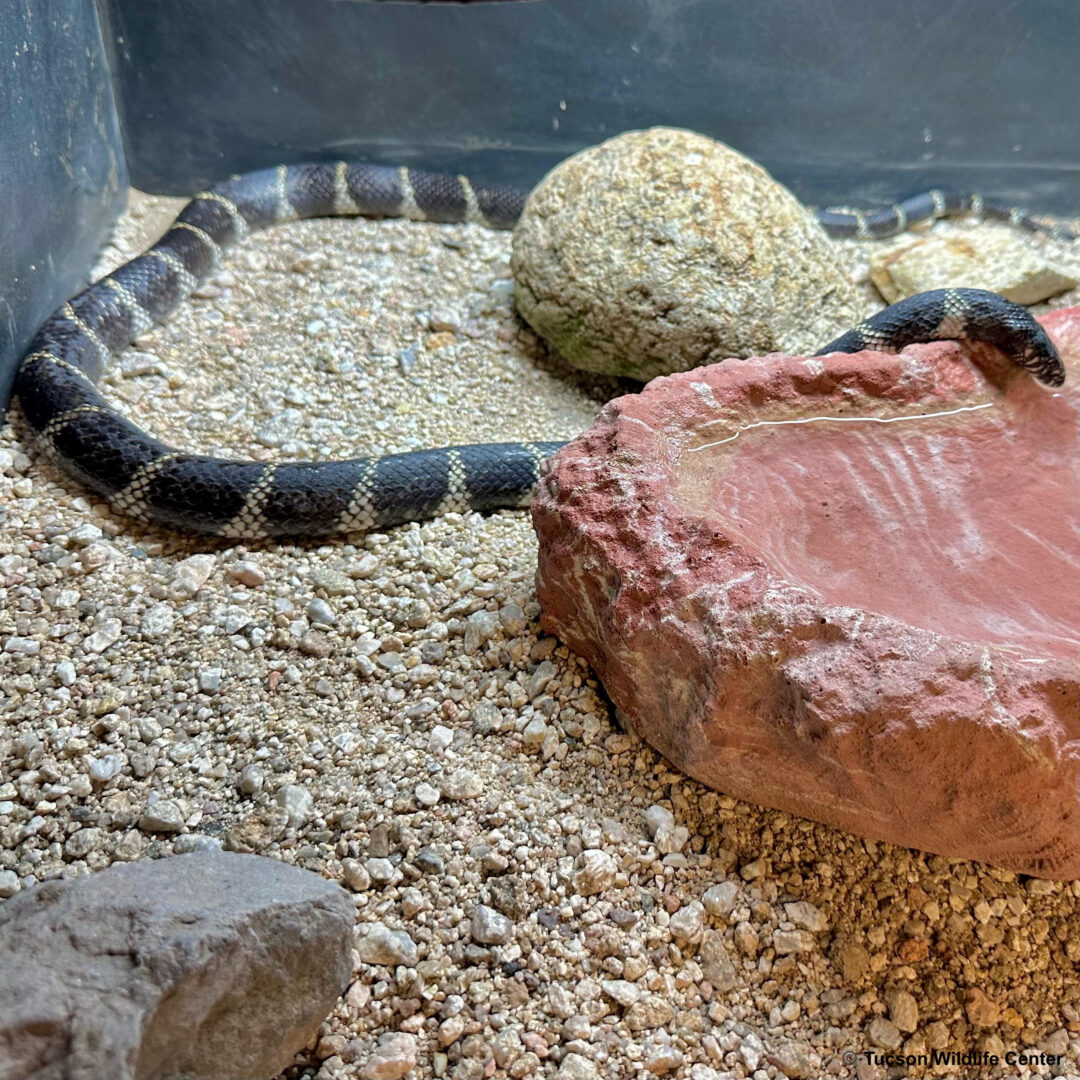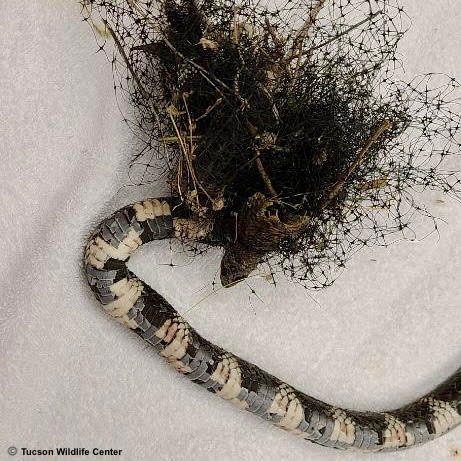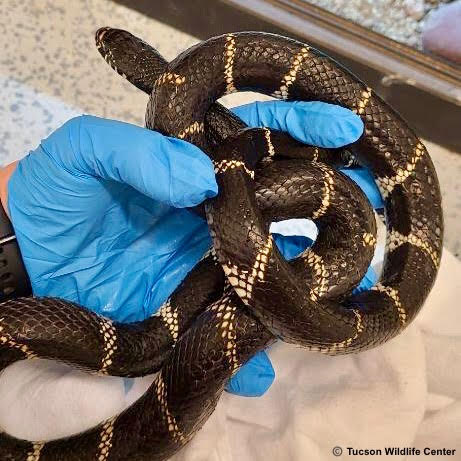
King Snake
This Kingsnake was one thirsty reptile after being brought to Tucson Wildlife Center, trapped in plastic landscape netting. After releasing him from the netting, his intake exam by TWC’s wildlife care team revealed some bruising and abrasions. He was also very dehydrated but, after a few days of treatment for his wounds, he was healthy enough to be released back into the wild.
One of the most common snakes in North America, Kingsnakes are medium-size nonvenomous snakes that kill by constriction. They are called kingsnakes because they sometimes eat other snakes, including the rattlesnake—due to being highly tolerant of the rattlesnake’s venom. As for our parched patient, watch the video to see the unique way he slurps down water. The bottom part of the snake’s mouth has small grooves that act like a sponge, absorbing water which is then pushed into his stomach by muscles in the mouth and esophagus.
This Kingsnake’s story has a happy ending, but that is not always the case. Each year, TWC
admits several snakes, small mammals and birds stuck in plastic landscape netting. As you make plans to protect your garden from birds and bunnies this summer, we suggest looking into other options. One alternative is an insect mesh which has significantly smaller holes so that wild animals are less likely to be trapped.
If you would like to help patients like this Kingsnake, click the donate button below.
Another way you can contribute is to visit our “wish list” on Amazon by clicking on the Amazon Wish List button below. We appreciate it, as will all the wild animals in our care!
Below is a short video King Snake drinking water




